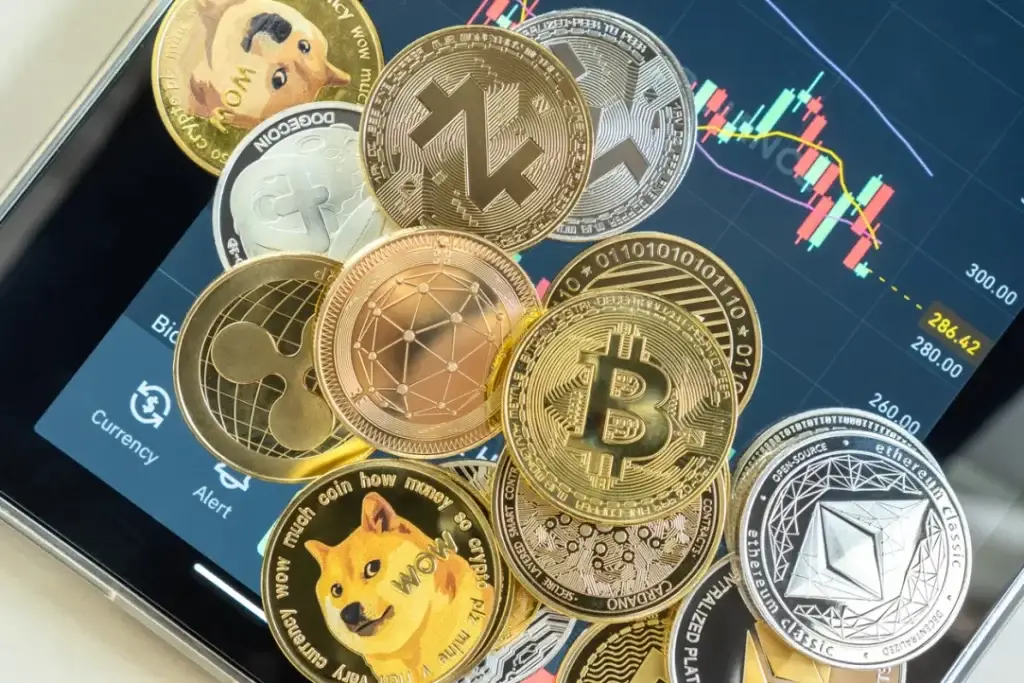2024 is the year in which the cryptocurrency market is on the eve of a new round of development. Investors around the world are wondering: which cryptocurrency should they invest in so as not to miss out on the chance of big profits? But before we delve into the world of blockchains and tokens, it is important to understand which coins will show the strongest growth and which risks could unexpectedly disrupt the triumphant path to profit.
Top cryptocurrencies for long-term investments
Ethereum (ETH): leader in decentralization and smart contracts
It is not for nothing that Ethereum is often called “the heart of the blockchain revolution”. The platform is not only leading, but also sets the rules of the game. In 2024, the company continues to show phenomenal stability and strengthens its position by switching to Proof of Stake. This measure reduced the energy consumption of the grid, making it more environmentally friendly and economical. For those wondering which cryptocurrency to invest in for the long term, Ethereum is a pretty safe bet.
Ethereum is not just a platform for creating smart contracts. It is an entire ecosystem on which decentralized applications (dApps), ICOs, and NFTs are built. In 2024, interest from major companies is expected to increase as they begin to more actively use Ethereum-based blockchain technologies:
- In 2024, Level 2 upgrades will speed up transactions and reduce fees.
- The development of solutions to improve scalability will lead to an increase in the number of network users and new Ethereum-based projects.
List of leadership benefits:
- Successful transition to Proof of Stake (lower energy costs).
- High degree of decentralization.
- Support for a large number of dApps and smart contracts.
- Development of level 2 solutions for scalability.
Polygon (MATIC): A Bridge Between Networks
Polygon (MATIC) is becoming an increasingly important platform for cryptocurrency investors. As a second layer for Ethereum, Polygon solves the main scalability problem of blockchains by offering fast and cheap transactions. In 2024, this project will become even more important for the decentralized finance (DeFi) and NFT markets, making it a great option for those looking for cryptocurrencies with high growth potential.
Polygon’s partnerships with major companies and integration with other blockchains, such as Avalanche and Solana, bring additional benefits. The Polygon system allows for easy interaction with multiple blockchains and creates universal solutions for developers and users:
- MATIC plans to implement new solutions for data security and privacy in 2024.
- In the long term, this coin promises significant growth due to its support for decentralized applications.
Cryptocurrency for short-term investments: quick profit or high risk?
 Solana (SOL): Speed is Key
Solana (SOL): Speed is Key
Solana has taken on the role of a platform for fast transactions and is set to consolidate its position as the platform with the greatest short-term growth potential in 2024. Thanks to its unique architecture, Solana can process up to 65,000 transactions per second, making it one of the fastest networks in the cryptocurrency space.
Solana offers active investors and traders the opportunity to trade quickly and profit from market volatility. The network’s high throughput and minimal fees make it attractive for short-term transactions.
In 2024, Solana will launch new NFT and DeFi solutions, attracting even more users to the platform.
The increasing demand for faster transactions and integration with other networks is expected to significantly increase the token’s value.
List of advantages:
- Incredible transaction speed.
- Minimal transaction fees.
- Ample opportunities for DeFi and NFT-focused traders.
Avalanche (AVAX): Investing in Ecosystems
Another powerful player that is attracting the attention of investors. In 2024, this currency will continue to be a favorite among investors focused on short-term transactions. The Avalanche Network offers a solution for creating and managing decentralized finance, making it an indispensable tool for DeFi traders:
- Avalanche has a unique architecture that allows multiple blockchains to run in parallel.
- This gives the platform maximum flexibility and scalability.
Factors that will help you choose a cryptocurrency to invest in
Before deciding which cryptocurrency to invest in, it is important to carefully study current market trends and news. Investing requires a thorough analysis, from capital assessment to growth expectations. In 2024, it will be especially important to focus on projects that solve real user problems and offer innovative technologies.
Advice:
- Cryptocurrencies with a small market cap should be considered, as they can suddenly rise and bring in large profits.
- It is necessary to evaluate not only the financial indicators, but also the activities of the development team.
List of parameters for analysis:
- Capitalization and liquidity of the currency.
- Technological solutions and their novelty.
- Community trust level and transparency of projects.
- Team activity and update frequency.
Risks of investing in cryptocurrencies: what to look for?
The market is still very volatile, and investing in this market always involves certain risks. It is important to realize that sharp fluctuations in currency values can lead to huge profits or significant losses. Market volatility is expected to increase in 2024, especially due to possible changes in Russian crypto legislation:
- High market volatility remains the greatest risk.
- Uncertainty about the regulations surrounding electronic money in Russia and other countries can lead to sudden changes in the exchange rate.
How to choose a cryptocurrency to invest in: a step-by-step algorithm for 2024
It is important to follow a clear plan that minimizes risks and helps you find the most promising assets. The strategy should take into account both technical aspects (technology, transaction speed, security) and market aspects (capitalization, popularity among users).
Step-by-step plan:
- Discover the development team and their performance.
- Evaluate the technological solutions of the project.
- Discover market forecasts and news.
- Check the level of trust of the community.
- Carefully analyze the capitalization and liquidity of the currency.
Conclusion
 2024 will bring new opportunities for investors. Deciding which cryptocurrency to invest in requires careful consideration and analysis. Ethereum, Solana, Polygon and Avalanche all have great potential, but the risks are high. Forecasts show a growing interest in projects with innovative solutions and low capital coverage, which can be a good start for new investors.
2024 will bring new opportunities for investors. Deciding which cryptocurrency to invest in requires careful consideration and analysis. Ethereum, Solana, Polygon and Avalanche all have great potential, but the risks are high. Forecasts show a growing interest in projects with innovative solutions and low capital coverage, which can be a good start for new investors.
In cryptocurrencies, as in any other type of investment, success depends on smart choices and clear analysis.
 en
en  ru
ru  de
de  ar
ar  es
es  nl
nl  hi
hi  fr
fr  it
it  pt
pt  el
el 




